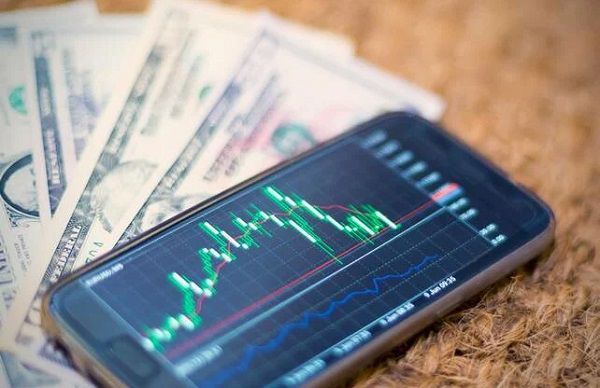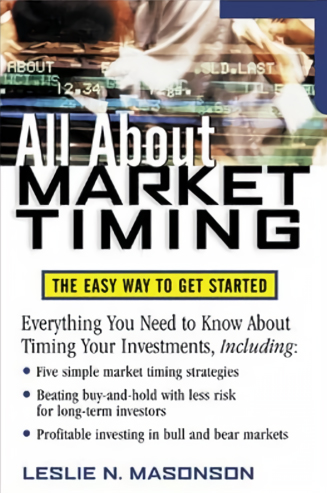A survey states that the result of the well-planned trading system will be much better compared to unplanned trading.

A well-planned trading system consists of some guidelines dealing with your trading activities. A survey reveals that the best final result of a trading system is based on the well-planned system than the unplanned one. As the saying goes, "If you fail to plan, it means you plan to fail."
The saying also fits in the trading business in the Forex market. The traders who have planned very carefully will easily enter the market because the ideas have been planned and organized well. The plan deals with the trading styles, personal psychology, strategy, and the target achieved. A good plan will make your trading much more objective and reduce the emotional involvement that will cause stress. Moreover, the directed plan will make you stand stronger and longer in the market due to the consistent trading result.
Your trading system will be more efficient if you don't involve your emotion. That's one of the benefits of a well-planned trading system. Besides, if you feel more relaxed, you will make rational and directed decisions based on your plan. The decisions will be based on your need and taste. For helping you planning, you can make some script, make an Expert Advisor (EA), or even create the robot software as a conventional trading plan replacement. Nevertheless, you cannot force the use of trading software because sometimes your ideas cannot be represented or adapted in program software. In reality, many professional Forex traders do not use the trading software fully. Their main plan is still written manually.
People may think that the trading plan and strategic plan are the same. It is just a matter of different terms, but actually, they are different. They must have differed clearly so the implementations are not mixed up and overlapped. The trading strategy deals with the entry-level, exit level, and trade management. Meanwhile, a trading plan covers the way of your thinking including the trading strategy, the short and long term target, money management, routines, and emergency action you must take if your account is in worrying condition.
All of those points should make you focus on the plan if you want to trade seriously. Besides, you need to evaluate all the time and find new ideas, skills, or knowledge. Those actions will make your trading plan can adapt dynamically depending on the market condition which changes constantly. You also need to know the main basics of the trading plan after deciding your motivation in Forex trading. You must set your clear goal in Forex trading, whether it is just for fun, for earning additional money, or you are forced because you have no job but you need income. The goal setting is very important because it will lead to your trading plans in the future. If you have set it, now you must learn about the main basics of the trading system.
5 Basics of a Trading System
A trading plan simply comes with five main basics as follows:
1. A Trading Mindset
A trading mindset is a way to think and plan in a trading system. It reflects a trader's mental in analyzing and predicting the price fluctuation in the market, the emotion during the trading, the time for trading, as well as the strengths and weaknesses. The following questions might help you to build your trading mindset.
- Why do I want to be a trader? (Motivation)
- How is my trading style? (Fundamentalist, chartist or technicalist, scalping, day trading, swing trading, or long-term trading)
- What are my strengths and weaknesses in trading? (this is for optimizing strengths and preventing the weaknesses)
- What is my mental tendency? (calm, relax, stressful, tired or emotional)
- How long will you dedicate your time to trading, analyzing the market, or doing research?
Here is an example of the answers to the questions:
Question (a): "I want to be a trader to get additional income. This target is important for me because in the long term I want to have traded as the main income. I am sure that becoming a successful trader will make me more confident, creative, and excited in doing research."
Questions (b), (d), and (e): "I am a technicalist and my trading style is a scalping or daily trading. I only have about 2 hours in a day for trading with a maximum of 4 tradings depending on the market condition, technical setup, and the signal. I will enter the market when I am not busy with other jobs when I feel relaxed and calm. I have time in the evening to do analysis and research."
Question (c): "My main strength is I am confident with my method. I can quickly predict the fluctuation price movement in a low time frame. My main weaknesses are I tend to get emotional in applying the strategy I made, especially in determining the time for exit although my target level has been reached. For overcoming my main weakness, I will try my best to follow the exit strategy strictly, or I will make a special script for an exit, or maybe using an Expert Advisor (EA) for avoiding the intervention on the trading position I opened."
2. A Trading Goal
There are huge reasons for someone to be a trader. The most common one is to get more income. However, the most important thing you should know is the financial target you want to reach. Determining the target is important in a trading plan because it is the starting point to evaluate what you have reached in some period. Here are the questions that might help you in setting the target:
- What is my main target? What do I expect for reaching the target?
- How much is the target income I want from trading? (weekly, monthly, annually)
- How do I evaluate whether my plans run well or not?
The answers can be as following:
"My trading target is mainly for getting consistent profit weekly, monthly, and of course annually. I expect I get a profit of at least 5% from the equity account monthly with the drawdown less than 20%. I am sure I can reach the goal because the strategy I apply has been tested in the last 4 years. The result is it earns a consistent profit. My profit probability is sufficient so far. If my trading result is consistent in these two months, I will consider that I have reached the short-term target. Then, I will evaluate for improving my achievement in the future."
3. Risk Management and Money Management
The risk management focuses on the big risk in every trade, a risk/reward ratio, a profit probability, and a position sizing. All of them depend on your trading account type, the currency, and the risk you deal with per trade. You can count te trading size or the volume in every trade. Meanwhile, the plan for money management focuses on managing risk towards the equity account that depends on the equity or balance fluctuation in the entire trading.
The questions that might help you in determining the risk and money management are as follows:
- Do I consider the risk factor is important?
- How can I determine the risk amount (or a stop level)? Will it be strict or flexible?
- How big is the trading strategy should I use? (The accuracy of every trade is combined with a risk/reward ratio per trade).
- What money management approach I will use?
- What should I do when the drawdown is big enough?
- What risks can be brought upon by my broker and my trading PC (hardware)?
Here is an ideal reply:
"I always consider risk factor is important, therefore, I should be careful. The risk cannot be avoided, and I am always worried about the risk of holding my position too long. As a result, I tend to trade in the short-term by entering and exiting the market. The longer I stay in the market, the more I get worried that something will happen and result in a massive loss. I will quickly take profits and cut losses by applying a strict level of Stop Loss and low risk/reward ratio.
For example, I apply risk/reward ratio 1:1 on average, more or less. The amount of Stop Loss and target profit relatively depends on the market condition. The average is between 25 to 50 pips. The risk/reward ratio might not be sufficient in the long period because it is not profitable. Therefore, I always evaluate and do the back-test over and over again to get a higher profit percentage.
In money management for forex trading, I take a risk of 1% from the equity in every trade. If I have USD1000, I can trade with 2 micro lots for a trade with a 50-pip Stop Loss. So, the total risk I will get is USD10 or 1% of the equity. The money management I used is a fixed fractional so I trade 0.01 lot per USD500, by adding or reducing in every USD500."
4. A Trading Strategy
The point of the plan is a strategy. In Forex trading, the point of the strategy is the rules for entry and exit. Almost all strategies in Forex trading lead to three types:
- Breakout
It is the start of a new trend after consolidation or movement which tends to move in sideways (ranging). A trader usually enters after the price reaches key levels (mostly support and resistance). - Retracement
It is a short-term correction that does not change the direction of the long-term trend. A trader usually enters when the correction ends and follow the main trend.= - Reversal
It is a trend reversal in the short, middle, or long term. A trader usually enters after the reversal signal is truly valid. There are entry and exit rules that become a standard rule. It deals with the characteristic of price fluctuation which helps you identify the right time condition to enter and exit the market. The signal of a specific condition can fulfill all or a part of rules you decide for triggering your trades. Hence, the plan for entry and exit must be based on the rules and signals.
There are several questions that you can answer to make a plan for trading strategy.
Entry rules:
- What are your rules for making entry?
- How you make the rules?
- What kind of trading signal that triggers you to make an entry?
Exit rules:
- What are your rules to exit?
- What kind of trading signal that warns you to exit?
- How will you decide the profit target in every trade?
- Will you use a certain mechanism for protecting the profit (such as trailing stop)?
You can answer the abovementioned questions like this:
Entry rules:
I usually follow a trend, so I should make an entry in a trend that is going on. It means it refers to the retracement or a little correction that happens. The method is commonly named as a moving average bounce. I will make an entry after the correction ends and the price starts moving in accordance with the trend direction.
The entry rule is based on the matching trend through the indicator of a Simple Moving Average (SMA) with the periods of 100 and 200 at H1. The trend is considered rising (or falling) if the trend is above (or below) both lines of the SMA. If the trend is identified in the hourly time frame (H1), I should wait for the same set-up in 5-minute time frame (M5).
If a trade happens on EUR/USD, I will wait until EUR/USD has retraced (experienced the correction) to the direction of SMA 100 movement in M5. It is better to wait until the price experiences a reversal or bouncing. Then, I can make an buy (or sell) entry when the EUR/USD is bouncing to the upper (or lower) direction from SMA 100 in M5.
Exit rules:
If I have entered a buy (or sell) position and the retracement moves to the direction of SMA 200 (opposite to the position before), it is better to exit when the price reaches 15 pips below (or above) the line of SMA 200. Usually, the Stop Loss is at 50 pips in this position. The profit target to keep is 50 pips (or more), and the trailing stop is set after every 15-pip profit.
5. A Trading Routine
Doing something in a routine is a way to get real progress and discipline. Your broker usually gives the statement of trading results that you have been done in detail. However, you must evaluate your trading by yourself by giving the notes on each trade. You should make a trading journal separately for knowing the progress. In your trading routine, the important thing is to evaluate from time to time in order not to repeat the mistake which you have been done.
The following questions might help you to motivate your trading:
- What is your job routine beside trading?
- Do you always evaluate the result of your last trading?
- What's your question for the winning trade result?
- What's your question for the losing trade result?
- What's your promise to yourself about trading?
Confused when trying to answer the questions? Here is a good example:
If you are a full-time trader and has no other job, you will depend on the Forex profits mostly for income. Therefore, trading becomes an important and routine job. The routines might include analyzing the market based on the plan and strategy, then entering the market if it is possible. The plan may take the trade between 0 (not entering the market) until 4 trades in a day depending on the trading signal. For the entry, you may want to analyze manually, but you can analyze automatically for the exit.
You can evaluate the trading result every day for ensuring that you always follow the plans and strategies made. If the trading is in the random distribution between the winning trades and the losing trades without following the strategy or system, it means you maintain the profit. It is no over-confidence until there is an abundance of euphoria which causes overtrading with unplanned entries.
You have to keep calm when you get lost so you will not have a bad-tempered and be reluctant to make another entry. Do the special evaluation for getting the lesson from the trade. The on-track trade execution is more important than the profit result. The emotion needs to be evaluated, too, before entering the market because you have to be calm, relaxed, and ready as a professional trader.
If you make an unplanned entry, it is better not to trade the next day until you find the cause you trade out of plan. Set the normal target in the short term and don't be too high. Stay on the planned trading and be disciplined.
Conclusion
- Plan your trade and trade your plan.
- Run your plan and strategy consistently.
- Without evaluating plans and strategies, you will never know your progress and achievement.

 Dedicated FREE FOREX VPS
Dedicated FREE FOREX VPS Free FOREX Virtual Private Server
Free FOREX Virtual Private Server MT4 Demo Contest, Get $500
MT4 Demo Contest, Get $500 Sign Up for an Account, Claim 60% Deposit Bonus
Sign Up for an Account, Claim 60% Deposit Bonus Free MT4/MT5 VPS 2024
Free MT4/MT5 VPS 2024 Send E-mail and Get Free Merchandise
Send E-mail and Get Free Merchandise $1K Refer a Friend Bonus for Pepperstone Pro clients
$1K Refer a Friend Bonus for Pepperstone Pro clients Maximize Your Earnings with 100% Deposit bonus
Maximize Your Earnings with 100% Deposit bonus Trade to Win, $5,000 Monthly Demo Contest
Trade to Win, $5,000 Monthly Demo Contest Claim 30% + 15% Deposit Bonus from LiteFinance
Claim 30% + 15% Deposit Bonus from LiteFinance













1 Comment
Yudha
Dec 2 2022
All of these strategies require a certain consistency and discipline that beginners lack. i think in order to build a good trading system can take 1-2 years, sometimes more than 2 years. So when a newbie loses patience and starts quitting forex, I don't get confused at all. Implementing all the tips in this article is not trivial, but can be done with some discipline. By the way, I have been training with the tips in this article for 6 months now. Thanks, hats off to the author!